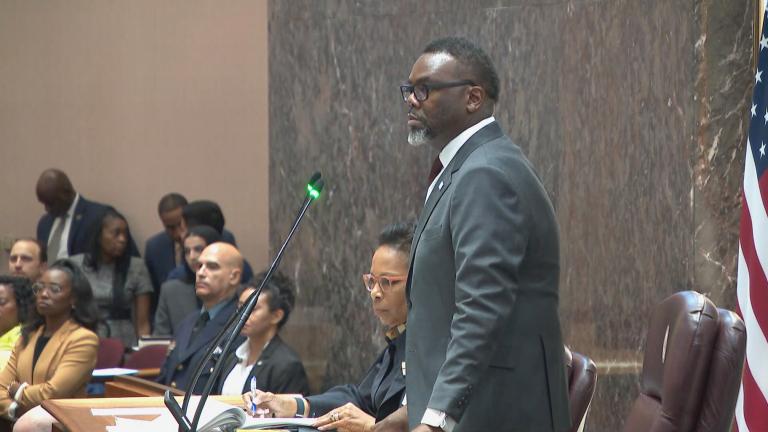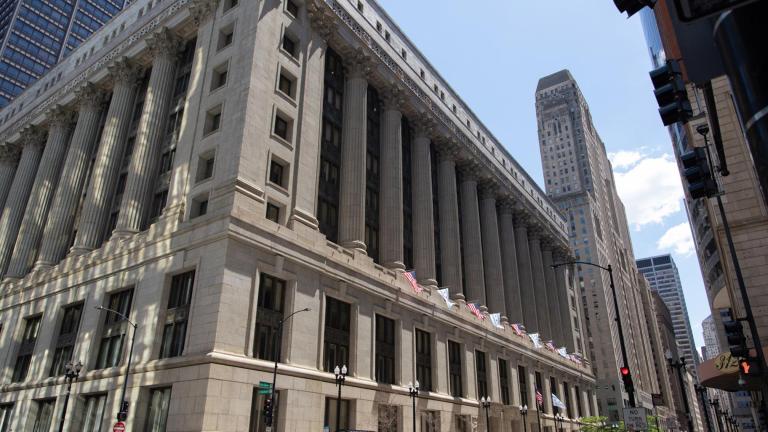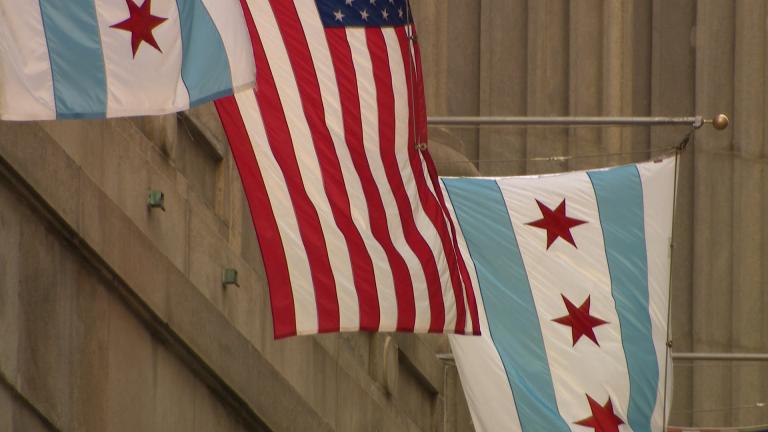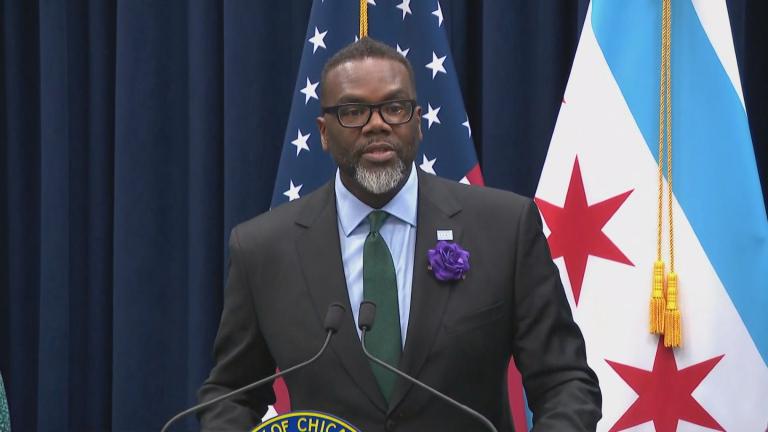Video: A plan to go after gang profits, the ongoing remap fight, and much more. A panel of alderpeople weigh in ahead of the year's first city council meeting. (Produced by Nick Blumberg)
After four public hearings in less than a month failed to resolve the raging dispute over the map that will shape Chicago politics for the next decade, representatives of the Black and Latino City Council caucuses will meet behind closed doors Friday, leaders of both groups said Tuesday during an interview for “Chicago Tonight.”
But a deal that would determine the balance of political power between Black, Latino and Asian Chicagoans remains elusive, with neither Black Caucus Chair Ald. Jason Ervin (28th Ward) or Latino Caucus Chair Ald. Gilbert Villegas (36th Ward) optimistic that a compromise can be reached to avert a June referendum.
Friday’s meeting will give delegates from both caucuses a chance to see if a deal can be reached, Villegas said.
But if not, the Latino Caucus remains willing to ask voters to let Chicago voters decide, Villegas said.
Ervin confirmed that a meeting was set for Friday, but said he expected City Council members who are not members of either caucus to also attend.
The two caucuses appeared farther apart than ever after a hearing Friday, when Allan J. Lichtman, a professor at American University and a voting rights lawyer, told alderpeople that the map supported by the Black Caucus complied with the Voting Rights Act and did not disenfranchise Latino voters based on his analysis of the share of Chicagoans who are citizens older than 18 and those who are older than 18.
The map crafted by the Latino Caucus uses the voting age population of each ward.
In November, Villegas warned Ervin and other members of the Black Caucus against using citizen voting age data, saying it would make reaching a compromise impossible since it defied Chicago’s status as a sanctuary city that resisted efforts by former President Donald Trump to add a question to the 2020 census about whether respondents were United States citizens as part of a crackdown on undocumented immigrants.
Lichtman said his analysis was based on the fact that Chicago voters are less likely than in other places to vote solely along racial lines.
The map supported by the Black Caucus uses the same method and data as state lawmakers did when they crafted new boundaries for state legislative districts. A lawsuit that alleged that map disenfranchised Latino voters was dismissed by a three-judge panel.
After appearing on “Chicago Tonight,” Ervin told WTTW News that he hoped during Friday’s meeting that supporters of the Latino Caucus would come to realize that their map was “not in line with the law” and that they were in danger of “overplaying” their position.
The map backed by the Black Caucus crafts 14 wards with a majority of Latino voters and 16 wards with a majority of Black voters.
“That is more than what [the Latino Caucus] deserves,” Ervin said.
However, members of the Latino Caucus have repeatedly said they will not support a map with fewer than 15 wards with a majority of Latino voters. While Chicago’s Black population dropped 10%, its Latino population jumped 5% and its Asian American population surged 30%, according to the 2020 census.
Unless 41 alderpeople can agree on a map no later than May 19, the June 28 primary election ballot will ask voters to decide what the ward map should look like for the first time in 30 years.
The map supported by the Black Caucus has 33 co-sponsors, eight short of what it needs to become law. The Latino Caucus’ map is supported by 15 alderpeople.
Alds. Ed Burke (14th Ward) and Patrick Daley Thompson (11th Ward) have not signed on to either map. Burke and Daley Thompson have been indicted and are awaiting trial after having pleaded not guilty.
State law requires Chicago wards to be “nearly equal as practicable” while being as “contiguous” and “compact” as possible.
Since Chicago’s population in 2020 was 2,746,388 residents, each ward should have 54,928 residents, according to data presented to the Chicago City Council.
Note: This story will be updated with video.
Contact Heather Cherone: @HeatherCherone | (773) 569-1863 | [email protected]







